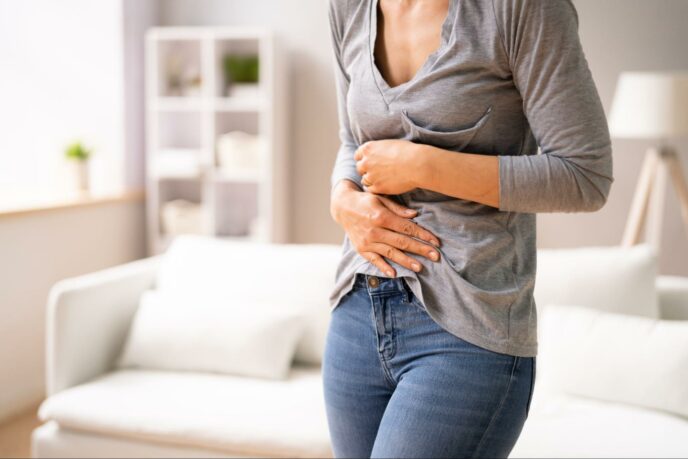
What is the Difference Between Fibroids and Ovarian Cysts?
Fibroids and ovarian cysts are two common health conditions that can affect women’s reproductive systems. While both involve growths within the reproductive organs and can cause similar symptoms such as pelvic pain and irregular menstrual cycles, they are different in terms of their causes, development, and potential impacts on a woman’s health. Understanding the key differences between fibroids and ovarian cysts is important for proper diagnosis and treatment.
What are Fibroids?
Fibroids, also known as uterine fibroids or leiomyomas, are noncancerous growths that develop in or on the walls of the uterus. They are the most common type of benign tumor in women and can occur at any age, although they are most commonly diagnosed in women in their 30s and 40s. While some fibroids are small and cause no symptoms, others can grow to be quite large and cause a range of symptoms that can significantly impact a woman’s quality of life.
Types of Fibroids
Fibroids can be classified into different types based on their location to the uterus:
- Intramural Fibroids: These are the most common type of fibroid and develop within the muscular wall of the uterus. They can cause changes in the shape and size of the uterus.
- Subserosal Fibroids: These fibroids grow on the outer surface of the uterus and can protrude outward. They may put pressure on surrounding organs.
- Submucosal Fibroids: These grow just beneath the uterine lining and can extend into the uterine cavity, potentially leading to heavy bleeding and fertility issues.
- Pedunculated Fibroids: These fibroids are attached to the uterus by a stalk, either inside or outside the uterus.
Uterine Fibroid Symptoms
Symptoms of fibroids can vary depending on the size, number, and location of the fibroids:
- Heavy or prolonged menstrual bleeding
- Pelvic pain or pressure
- Frequent urination
- Pain during intercourse
- Painful periods with severe cramping
- Spotting or bleeding between periods
While fibroids may cause a range of symptoms, some people may remain asymptomatic and only discover fibroids during routine medical examinations.
What are Ovarian Cysts?
Ovarian cysts are fluid-filled sacs that develop on or within an ovary. They are common during the reproductive years of women and often form as a natural part of the menstrual cycle. Many cysts are harmless and resolve on their own without causing any harm or symptoms. However, some cysts can cause discomfort, pain, bloating, or other symptoms, and may require medical attention.
Types of Ovarian Cysts
Most ovarian cysts are functional, developing as a natural response to hormonal changes throughout the menstrual cycle. However, in some cases, ovarian cysts can form for reasons unrelated to menstruation.
- Functional Cysts: These cysts are the most common and occur as part of the normal menstrual cycle – often resolving on their own.
- Dermoid Cysts: These are complex cysts that may contain hair, skin, or teeth.
- Endometriomas: These cysts are associated with endometriosis, where endometrial tissue grows outside the uterus.
- Cystadenomas: These cysts are benign growths that can occur on the surface of the ovary.
Ovarian Cyst Symptoms
Symptoms of ovarian cysts can vary depending on the type and size of the cysts, which may include:
- Lower back or thigh pain
- Difficulty in completely emptying the bladder
- Heavy or irregular periods
- Discomfort during sexual intercourse
- Weight gain
- Painful menstruation
- Soreness in the breasts
Like fibroids, ovarian cysts may not cause symptoms at all and may be found during a routine pelvic exam or imaging test.
Key Differences Between Fibroids and Ovarian Cysts
Both fibroids and ovarian cysts are common conditions that can affect reproductive health. While they share some symptoms, they have distinct differences in their origins, development, and potential health impacts.
- Location: Fibroids are located in or on the uterus, while ovarian cysts are found on or within the ovaries.
- Causes: Fibroids are often influenced by hormonal factors and genetics, while ovarian cysts can form naturally as part of the menstrual cycle or as a result of other conditions such as endometriosis.
- Symptoms: Both conditions can cause pelvic pain and menstrual irregularities, but the specific symptoms may vary based on the size and location of the growths.
- Potential Complications: Fibroids can cause fertility issues and pregnancy complications, while ovarian cysts can rupture, causing severe pain and other complications.
- Treatment: Treatment options for fibroids and ovarian cysts vary depending on the severity of symptoms and the type, size, and location of your fibroids or cysts. Options may include watchful waiting, medication, minimally invasive procedures, or surgery.
Request an Appointment with American Fibroid Centers
If you experience symptoms such as pelvic pain, abnormal bleeding, or changes in your menstrual cycle, it’s important to see a doctor. With proper diagnosis and management, most women can find relief from symptoms and maintain good reproductive health. Please request an appointment with one of our fibroid specialists today to evaluate your symptoms and learn more about uterine fibroids.
Related Blogs & Videos
Learn more about vascular health, prevention, and care for Peripheral Arterial Disease.





